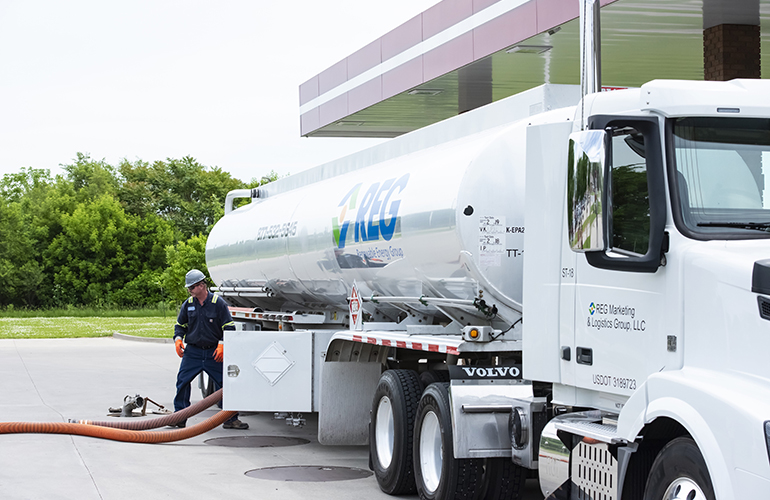 Have you spent time or resources preventing or mitigating water in your fuel storage tanks? It’s something all suppliers and retailers have at least thought about, and it’s important to know the facts.
Have you spent time or resources preventing or mitigating water in your fuel storage tanks? It’s something all suppliers and retailers have at least thought about, and it’s important to know the facts.
One of those facts is that the fuel itself is not the cause of water contamination.
It’s common knowledge among convenience store decision-makers that storing fuel — be it petroleum diesel, renewable diesel, biodiesel or gasoline — in a clean, dry tank is critical. In fact, water is the common denominator for two major issues with fuel storage: microbial contamination and corrosion. So let’s address these one at a time and discuss a few tips to help.
Water in the tank: No fuel can create water, and dissolved water isn’t the issue — free water is the problem. If there’s a way for free water to get into any fuel tank, it will. And a fuel tank with free water in it is likely to cause issues, one of which is microbial growth. Sources of free water include rain and condensation from combinations of warm days and cool evenings, or warm air above ground and cool underground temperatures.
Microbial contamination: Free water is the root cause for microbial activity in tanks. The outside world is full of microbes in the air, soil and surface water, which means some microbes will always be present in an underground fuel tank. But keep in mind that presence alone doesn’t cause problems — the problems occur when microbes are allowed to reproduce and flourish. This requires a free water layer in the bottom of a tank and time for the microbial population to grow unchecked.
Corrosion: Excessive microbial growth can contribute to corrosion in a storage tank (remember, this requires the presence of free water). Any kind of fuel can act as a feedstock for these microorganisms. They live in the water layer, they eat fuel molecules, and some can excrete corrosive molecules such as acetic acid. Corrosive molecules can affect tank walls, pipes, fittings and pump parts, and can cause rust to accumulate in dispenser filters.
Fuel storage tips: Clean, dry tanks are important to ensure your customers’ systems run properly. Here are five tips to keep your tanks clean and minimize the chances of water getting into the tank.
- Take a dispenser sample at least every 30 days and, ideally, immediately after a fuel delivery when the tank bottoms have been disturbed.
- Periodically pull samples from the dead bottom of the tank and inspect for free water and hazy fuel.
- Evaluate your system for potential points of entry for water and monitor regularly.
- Consider automated water-detection systems if possible to provide continuous monitoring to supplement periodic sampling.
- If free water problems persist for more than a week, consider removing water and wet fuel from the bottom of the tank and treating the tank with a biocide additive.
To keep your c-store operations and your customers’ vehicles functioning at their highest potential, your fuel tanks must be clean and dry. Having these facts and tips on hand will help you stay ahead of potential water issues.
Steve Klein is Senior Manager, Marketing, at Renewable Energy Group, a biodiesel and renewable diesel producer and supplier. He can be reached at [email protected]
"fuel" - Google News
May 05, 2020 at 11:02PM
https://ift.tt/2WufnnD
The Truth About Water in Fuel Storage Tanks - Convenience Store Decisions
"fuel" - Google News
https://ift.tt/2WjmVcZ
Bagikan Berita Ini















0 Response to "The Truth About Water in Fuel Storage Tanks - Convenience Store Decisions"
Post a Comment